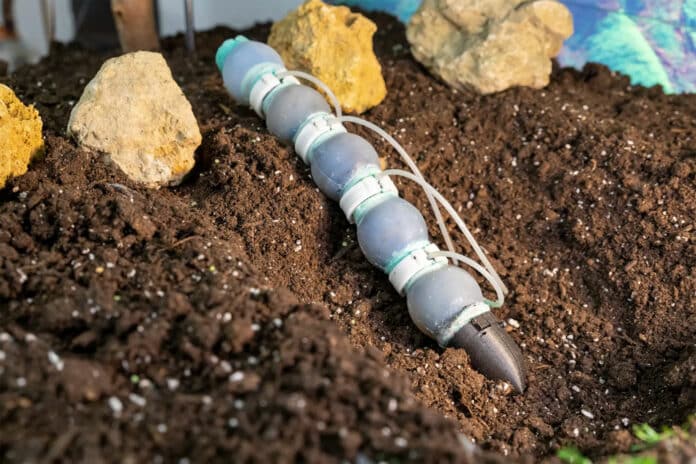Robotic locomotion in subterranean environments is still unsolved. It requires innovative designs and strategies to overcome the challenges of burrowing and moving in unstructured conditions with high pressure and friction at depths of a few centimeters.
Now, a team of researchers at Istituto Italiano di Tecnologia (IIT-Italian Institute of Technology) in Genoa has realized a new soft robot inspired by the biology of earthworms. The robot can crawl thanks to soft actuators that elongate or squeeze when air passes through them or is drawn out. The bio-inspired robot could be used for underground exploration, search and rescue operations in confined spaces, and the exploration of other planets.
Nature offers many examples of animals, such as snakes, earthworms, snails, and caterpillars, which use both the flexibility of their bodies and the ability to generate physical traveling waves along the length of their body to move and explore different environments.
Natural burrowers such as earthworms are entirely soft and possess a hydrostatic skeleton. They use alternating contractions of muscle layers to propel themselves both below and above the soil surface by generating retrograde peristaltic waves. The individual segments of their body (metameres) have a specific quantity of fluid that controls the internal pressure to exert forces and perform independent, localized, and variable movement patterns.
The research team, led by Prof. Barbara Mazzolai, set out to reproduce that mechanism in a robot. IIT researchers have studied the morphology of earthworms and have found a way to mimic their muscle movements, their constant volume coelomic chambers, and the function of their bristle-like hairs (setae) by creating soft robotic solutions.
The current prototype is 45 cm long and weighs 605 grams. The entire body of the robotic earthworm is made up of five connected peristaltic soft actuators (PSA) that implement the antagonistic muscle movements of earthworms. From a neutral position, it elongates when air is pumped into it and compresses when air is extracted from it. Each actuator has an elastomeric skin that encapsulates a known amount of fluid, thus mimicking the constant volume of internal coelomic fluid in earthworms. The earthworm segment becomes shorter longitudinally and wider circumferentially and exerts radial forces as the longitudinal muscles of an individual constant volume chamber contract.
To propel the robot on a planar surface, small passive friction pads inspired by earthworms’ setae were attached to the ventral surface of the robot. The robot demonstrated improved locomotion with a speed of 1.35 mm/s.
According to researchers, the potential applications for this technology are vast, including underground exploration, excavation, search and rescue operations in subterranean environments, and the exploration of other planets.
Journal reference:
- Riddhi Das, Saravana Prashanth Murali Babu, Francesco Visentin, Stefano Palagi and Barbara Mazzolai. An earthworm-like modular soft robot for locomotion in multi-terrain environments. Scientific Reports, 2023; DOI: 10.1038/s41598-023-28873-w
